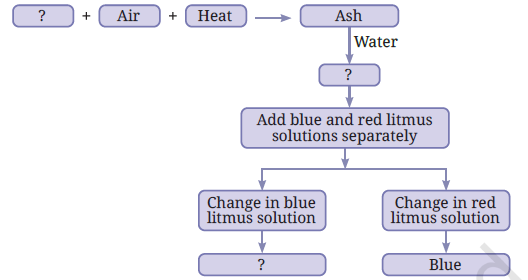Welcome to Bodhiclasses – your friendly space for mastering science through clarity, creativity, and curiosity. Today, we’re diving deep into NCERT Class 7 Science Chapter 4 – The World of Metals and Non-Metals with detailed, well-explained answers to all in-text and end-of-chapter questions. Whether you’re a student revising for exams or a teacher looking for ready classroom material, this is your go-to resource.

The World of Metals and Non-Metals – NCERT Solutions Class 7 Science
1. Which metal is commonly used to make food packaging materials as it is cheaper, and its thin sheets can be folded easily into any shape?
Answer: (i) Aluminium
Aluminium is cost-effective and has excellent malleability, allowing it to be pressed into thin sheets used for food packaging.
2. Which of the following metals catches fire when it comes in contact with water?
Answer: (iv) Sodium
Sodium is a highly reactive metal. When it comes in contact with water, it reacts violently, releasing heat and hydrogen gas, which can catch fire. That’s why it’s stored in kerosene.
3. State whether the following are True or False. Also, justify your answers.
(i) Aluminium and copper are examples of non-metals used for making utensils and statues.
False – Aluminium and copper are metals, not non-metals. Their high thermal and electrical conductivity makes them useful for utensils and statues.
(ii) Metals form oxides when combined with oxygen, the solution of which turns blue litmus paper to red.
False – Metal oxides are generally basic, not acidic. They turn red litmus paper blue.
(iii) Oxygen is a non-metal essential for respiration.
True – Oxygen is a non-metal and a vital component for the process of respiration in humans and animals.
(iv) Copper vessels are used for boiling water because they are good conductors of electricity.
False – Copper vessels are used mainly because they are good conductors of heat, which helps in boiling water efficiently.
4. Why are only a few metals suitable for making jewellery?
Answer: Only malleable, ductile, and lustrous metals like gold, silver, and platinum are suitable for jewellery. They can be shaped into delicate forms and retain their shine. Metals like iron or aluminium are not used as they corrode or lack aesthetic appeal.
5. Match the following:
| Column I | Column II (Jumbled Names) |
|---|---|
| (i) Used in electrical wiring | (c) PEPORC → COPPER |
| (ii) Most malleable and ductile | (e) OGDL → GOLD |
| (iii) Living organisms cannot survive without it | (a) ENXYGO → OXYGEN |
| (iv) Plants grow healthy when fertilizers containing it are added to the soil | (d) TENGOIRN → NITROGEN |
| (v) Used in water purification | (b) NECOHIRL → CHLORINE |
6. What happens when oxygen reacts with magnesium and sulfur? What are the main differences in the nature of the products formed?
Answer:
- Magnesium + Oxygen → Magnesium Oxide (Basic in nature)
- Sulfur + Oxygen → Sulfur Dioxide (Acidic in nature)
Magnesium oxide turns red litmus blue (basic), while sulfur dioxide turns blue litmus red (acidic). This shows the oxides of metals are basic, while oxides of non-metals are acidic.
The World of Metals and Non-Metals – NCERT Solutions Class 7 Science
7. Complete the following flowchart:

Answer:
Magnesium + Air + Heat → Ash + Water → Magnesium Oxide → Test with Litmus
→ Red litmus turns blue (magnesium oxide – basic)
8. You are provided with the following materials. Which is most suitable for boiling water and why?

Answer: Copper
Copper is the most suitable because it is a good conductor of heat, allowing water to boil quickly and evenly.
9. You are provided with three iron nails dipped in oil, water, and vinegar. Which nail will not rust and why?
Answer:
The nail dipped in oil will not rust because oil forms a protective layer that prevents contact with moisture and air, both of which are essential for rusting.
10. How do the different properties of metals and non-metals determine their uses in everyday life?
Answer:
- Metals (lustrous, malleable, ductile, sonorous, conductive) are used in wiring, tools, vessels, machines, and jewellery.
- Non-metals (brittle, dull, poor conductors) are used in fertilizers (nitrogen), antiseptics (iodine), disinfectants (chlorine), and respiration (oxygen).
11. Can sulfur be used to coat iron to prevent rusting since it does not react with water? Justify.
Answer:
No, sulfur cannot be used for coating because it is brittle and non-adhesive. Coatings must be strong and malleable, like zinc in galvanization, which forms a protective barrier against corrosion.
12. Why does an ironsmith heat iron before making tools?
Answer:
Heating makes iron soft and malleable, allowing the ironsmith to hammer and shape it into tools. Cold iron is hard and difficult to mold.


